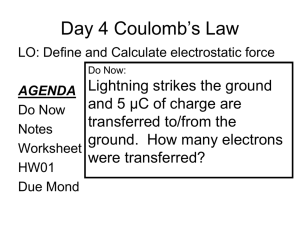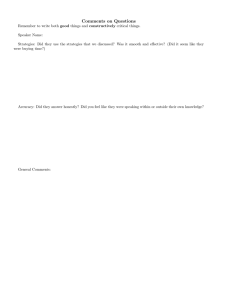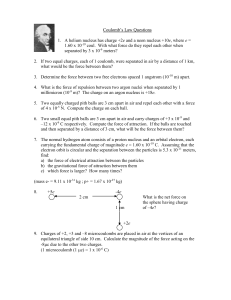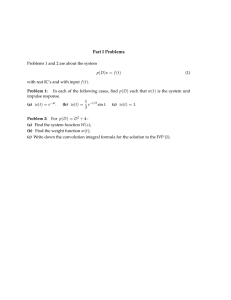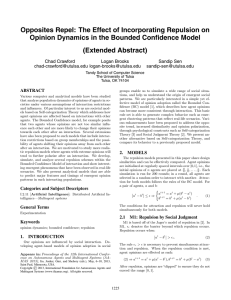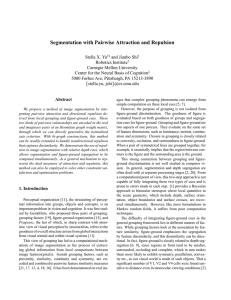Document 13644659
advertisement
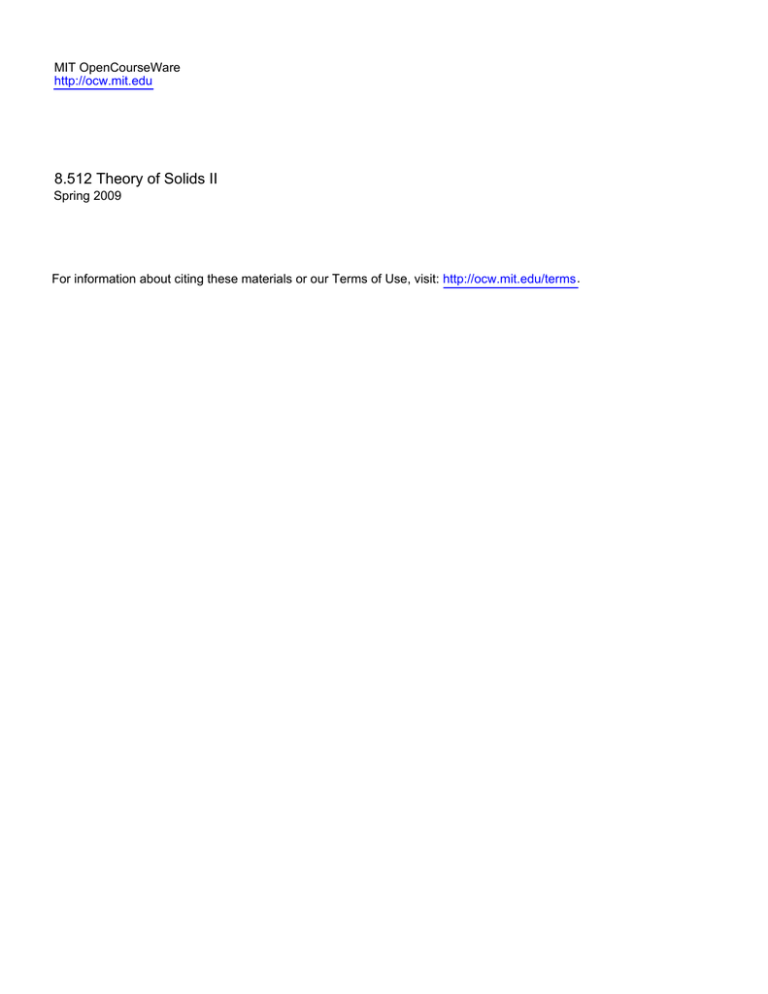
MIT OpenCourseWare http://ocw.mit.edu 8.512 Theory of Solids II Spring 2009 For information about citing these materials or our Terms of Use, visit: http://ocw.mit.edu/terms. 1 8.512 Theory of Solids II Problem Set 9 Due April 22, 2009 1. (a) We can include the effects of Coulomb repulsion by the following effective poten­ tial: V (ω) = Vp (ω) + Vc (ω) where Vp = −V0 for |ω| < ωD is the phonon mediated attraction and N (0)Vc = µ > 0 for |ω| < EF represents the Coulomb repulsion. Write down the selfconsistent gap equation at finite temperature. Show that Δ(ξ) is frequency de­ pendent even near Tc so that the Tc equation becomes � Δ(ξ) = −N (0) dξ � V (ξ − ξ � )Δ(ξ � ) 1 − 2f (ξ � ) 2ξ � (1) This integral equation is difficult to solve analytically, but we may try the fol­ lowing approximate solution: Δ(ω) = Δ1 , |ω| < ωD = Δ2 , |ω| > ωD Now rewrite Eq.(1) as � Δ(ξ) = −N (0) dξ � Vp (ξ � − ξ)Δ(ξ � ) 1 − 2f (ξ � ) +A 2ξ � (2) 1 − 2f (ξ � ) 2ξ � (3) where � A(ξ) = −N (0) dξ � Vc (ξ � − ξ)Δ(ξ � ) Convince yourself that A(ξ) is a slowly varying function of ξ for ξ << EF , so that we may approximate A(ξ) by A(0) in Eq.(2). Produce an argument to show that in the region ξ > ωD the first term in the R.H.S. of Eq.(2) is small compared with A so that in fact Δ2 ≈ A(0). In the same spirit show that Δ1 ∼ N (0)V0 Δ1 ln ωD + Δ2 kTc 2 Combining this with an equation for Δ2 using Eq.(3), show that the Tc equation becomes � 1 = ln where µ∗ = µ . 1+µ ln(EF /ωD ) ωD kTc � (N (0)V0 − µ∗ ) (4) µ∗ < µ is called the renormalized Coulomb repulsion. It can be thought of as an effective repulsion with a cutoff at ωD instead of EF . Equation (4) shows that the condition for superconductivity is N (0)V0 > µ∗ and not N (0)V0 > µ. For screened Coulomb repulsion, estimate µ and µ∗ for a typical metal. (b) Upon isotope substituting M → M + δM , how is the Debye frequency affected to leading order? Assuming that this is the only effect, how is δTc /Tc related to δM/M , (i) in the absence of Coulomb repulsion, and (ii) including Coulomb repulsion. 2. Show that within the Heitler-London approximation for two hydrogen-like atoms lo­ cated at Ra and Rb , the singlet and triplet variational energies are given by Es,t = Ea + Eb + where l = � V ±I 1 ± l2 drφ∗a (r)φb (r) is the overlap integral, � V = dr1 , dr2 |φa (r1 )φb (r2 )|2 (ΔH) and I is the exchange integral � I= dr, dr2 , φ∗a (r1 )φ∗b (r2 )φb (r1 )φa (r2 )(ΔH) where ΔH = e2 e2 e2 e2 + − − . Rab r12 r1b r2a

